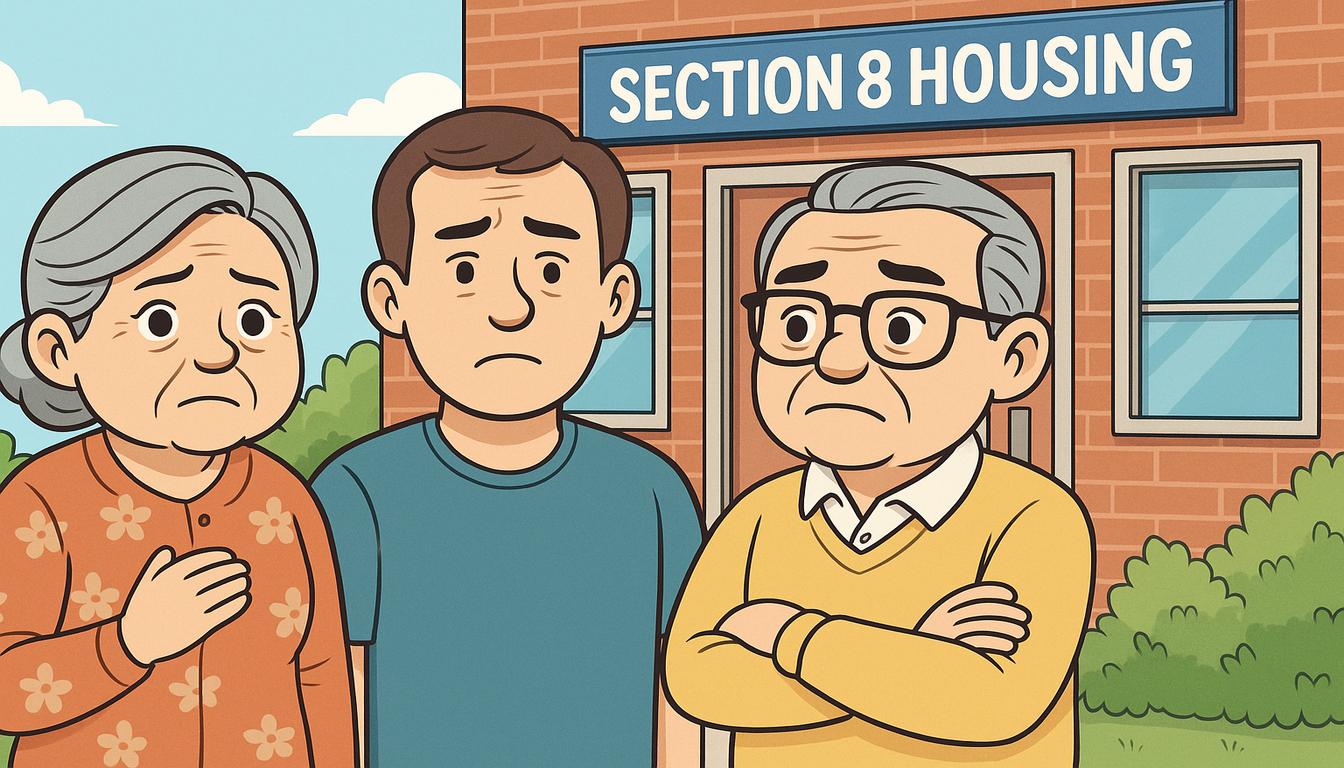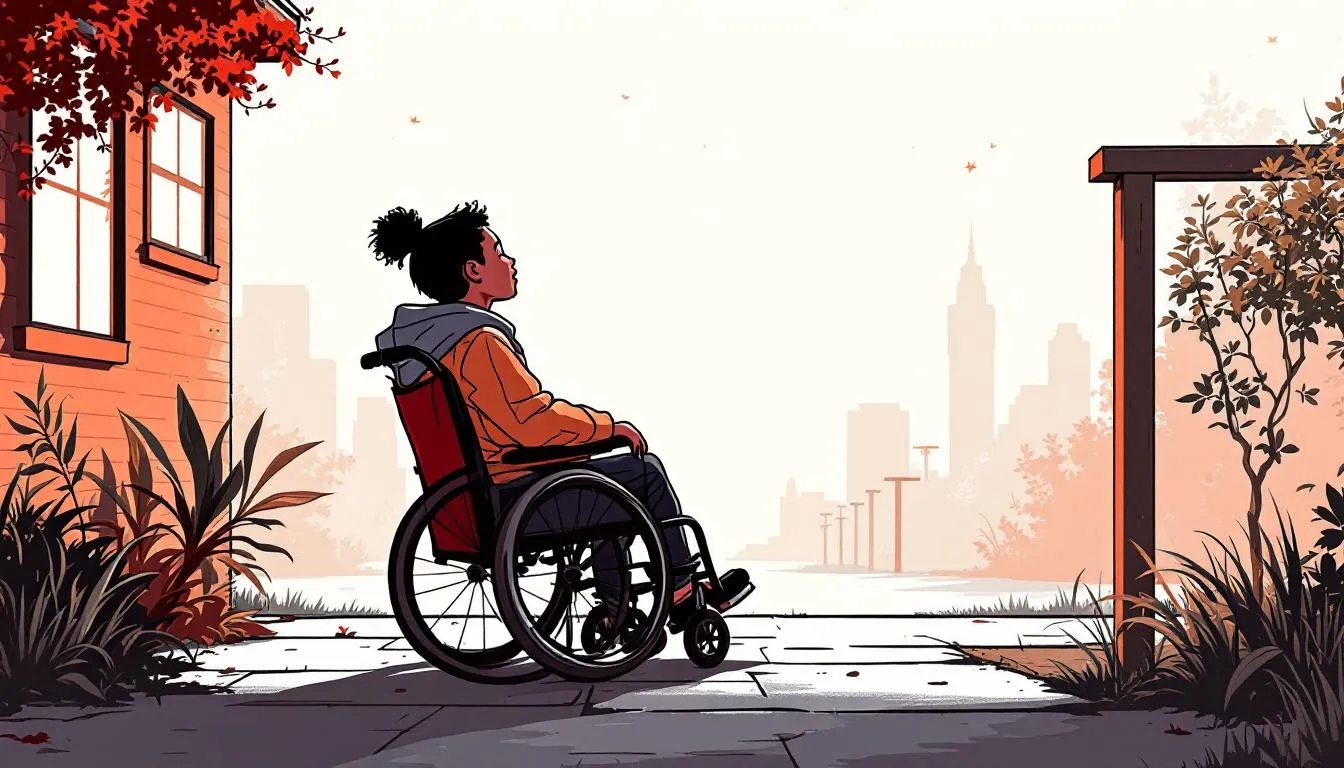
Key Takeaways:
-
Emergency housing programs exist to help those facing homelessness or eviction.
-
Securing Emergency Section 8 housing status allows you to bypass long waiting lists.
-
Specific qualifying circumstances for emergency status include homelessness, domestic violence, natural disasters, severe medical conditions exacerbated by inadequate or unsafe housing, and spending over 50% of income on rent.
-
Persistence and using available resources (211, public housing authorities, nonprofits, government programs) are key to getting Section 8 emergency housing.
Has either you or someone near you ever suffered from homelessness or eviction? Considering it can make you break out in a cold sweat. Anything can go wrong with anyone at any time, like losing a job, needing to flee domestic violence, or being evicted. There is some good news, luckily. Emergency assistance programs are intended to provide clean, safe housing promptly to those with housing emergencies.
Getting housing assistance, especially if you are in crisis with not much time, is extremely stressful. For individuals who are in housing crises but are required to move into Section 8 emergency housing, learning how to get Section 8 emergency status without dealing with lengthy waiting lists is valuable. When a family has a housing emergency, time is the last thing that anyone has; we understand that. That's why we made this guide to provide clear, step-by-step instructions on getting emergency housing assistance. We're here to help you secure emergency Section 8 vouchers as quickly and easily as possible.
Understanding Section 8 and Emergency Housing
Section 8, officially called the Housing Choice Voucher Program, lends a hand to poor families, the elderly, and the disabled. It offers a fast track to safe, clean, low-income housing within the private market. Demand for these vouchers overwhelmingly outnumbers the supply, resulting in what seems like an endless wait list.
Emergency housing status speeds along the process for those who need help right away, like those experiencing homelessness, domestic violence, or eviction. This is how you can get through the system for emergency housing support.
Step 1: Assess Your Situation
Before proceeding, you've got to know how to qualify for emergency housing. Common qualifying circumstances include:
-
Being homeless or living in a shelter or with someone temporarily
-
Victims of domestic violence
-
Natural disasters
-
Severe medical conditions exacerbated by current housing
-
Spending more than 50% of your income on rent
If at least one of these circumstances seems familiar to you, you may be up for expedited assistance. It's important to note, though, that being eligible does not guarantee emergency Section 8 housing. How many local resources are available is also important; this is just the first step.
Step 2: Contact 211 for Immediate Assistance
Your first move in seeking emergency housing assistance is to dial 211, a nationwide service that connects people with local resources and support. Dialing 211 will connect you with an operator who can provide info on available emergency low-income housing options.
Think of 211 as the 911 for your housing situation. Explain your housing situation clearly and ask for assistance with securing Section 8 emergency status or other available housing resources. The operator on the other end will do their best to route you to the emergency services that you need. They're there to help you, so provide them with as much information as you can or that they need.
Step 3: Gather Necessary Documentation
To apply for emergency housing status, you'll need to gather specific documentation to support your application. This may include:
-
Proof of income
-
Identification documents (like Social Security cards and IDs)
-
Documentation of your current housing situation (eviction notice, shelter residency verification, etc.)
-
Medical records, if applicable
-
Police reports in cases of domestic violence
Having these documents ready will help demonstrate how urgent your situation is, and doing this in advance will help speed up your process. The rule of thumb is that the more documentation that shows how tough your situation is, the better. So gather as much documentation as you can.
Step 4: Apply for Emergency Housing Vouchers
Once you've gathered all your emergency housing documentation, you'll need to apply for emergency Section 8 housing vouchers. The government gives your local Public Housing Authorities funding specifically for Emergency Housing Vouchers, with over 70,000 issued to date. This process can vary depending on your location, but generally involves:
-
Contacting your local Public Housing Authority (PHA): You can search for the PHAs closest to you with Section8Search. They'll be the results that show up in purple. Make sure to contact all of them, as they all may be able to help you in different ways.
-
Completing the Application: Be thorough and honest in your responses, providing all necessary documentation. This application will likely also be used for other housing programs to which the PHA has access.
-
Requesting Emergency Status: Clearly indicate that you are seeking emergency Section 8 housing due to your specific circumstances.
Your PHA will review your application and determine your eligibility for emergency status. If approved, you may bypass the traditional waiting list and receive expedited assistance. Even if you are not approved for immediate emergency assistance, you will be placed on waitlists for other programs that can help you.
Step 5: Explore Additional Housing Resources
While waiting for your application to get going, explore other housing resources within your reach. Some options include:
-
Transitional Housing Programs: These programs offer temporary housing and support services while you work on getting your hands on permanent housing.
-
Local Non-Profits and Charities: Organizations (think groups such as the Salvation Army, Catholic Charities, and United Way) often provide emergency housing aid for seekers in need.
-
State and Local Government Programs: Many local jurisdictions offer extra resources for those in urgent need of housing. Be sure to focus on programs that are available near you.
Step 6: Follow Up and Stay Informed
After submitting your application, follow up with your PHA regularly to check on the status of your application. Staying proactive can help ensure that your case does not fall through the cracks and help keep you a priority.
Additionally, maintain communication with any organizations or resources you've contacted. Building relationships with these entities can provide ongoing support and assistance.
Real-World Example: Success Through Persistence
For Maria, who was a single mother at risk of eviction, she was able to obtain housing with an emergency Section 8 housing voucher at her time of greatest need. Through calling 211, obtaining necessary paperwork, and applying for low-income emergency housing vouchers for her area's PHA, Maria acquired a Section 8 voucher within one month. She completed this by seeking aid from local charities, which helped her temporarily and assisted her while she went through an application process.
A Guiding Light in Your Section 8 Housing Emergency
Obtaining Section 8 emergency status without a waiting list can be daunting, yet very accessible for those in crisis. By following this process — evaluating your situation, calling 211, obtaining your information, applying for emergency Section 8 vouchers, researching other available resources, and remaining proactive — you can better maneuver within the system.\
Don't forget, you're not alone. You've got this! Help and resources can assist you in getting through this challenging situation. Be resolute, seek assistance, and take each step one at a time. Your road to stable, low-cost, low-income, emergency housing is within sight.
Navigating the Section 8 housing process can feel overwhelming, and that's where Section 8 Search comes in. We're more than just a listing website; we're a dedicated resource designed to make finding housing under the Housing Choice Voucher Program straightforward and stress-free. Our platform offers user-friendly tools to explore listings and waiting list statuses nationwide, all built on official HUD data. We're also passionate about providing clear, helpful information and guidance, empowering you with the knowledge you need to understand eligibility, complete your application, and confidently navigate your housing journey.

.png)
.png)
.png)





.png)
.png)
.png)
.png)
.png)
.png)
.png)




